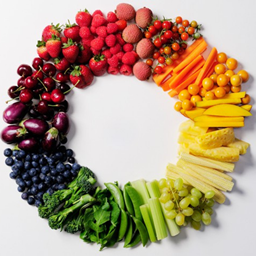Does it have to be a food? If not, you could do rocks.
Blue: sapphires
black: obsidian, or per Mike’s suggestion, raven feathers.
Edit: oops-- forgot spoiler tags.
Does it have to be a food? If not, you could do rocks.
Blue: sapphires
black: obsidian, or per Mike’s suggestion, raven feathers.
Edit: oops-- forgot spoiler tags.
Hi Amanda,
To extract the actual colour from the vegetable or fruit I plan to use a blender (or is it called a juicer?) some kitchen appliance to chop up whatever you put in and extract something more smooth which I can put into my paint gun :p.
I am planning to use coloured crystals (I collected crystals in my jounger years and also helped my daughter with her lecture on crystals and how to grow them) in another game. Also putting stones in a blender is pushing the boundaries of reality a bit too far. Hmmm I could use it as a ‘red herring’ but breaking the blender by abusing it and the player needing to undo or restore to repair the damage… Not sure if it is worth the effort. But thank you for your suggestion!
I think that as a near endgame puzzle, it would be interesting to remove color from something: probably making a white that is the absence of color rather than just a splat of cauliflower.
Ooohhhh… hmmmm… I mean, technically the steak still works, but… huh.
Yep, unintentionally gross, sorry.
Hi Pinkunz,
My bad, I should have mentioned the blender in my original post. Putting a steak in a blender would end up… ahem… a bloody affair. I try to keep it ‘kid-friendly’ and adding a meat grinder to the kitchen would no doubt lead to people trying to put anything in there… Even if it would be blatantly wrong. But thanks for the suggestion!
You could have multiple sources of color to make alternate solutions and “aha” moments: “I’ve used all my apples, what else is red…STEAK! Does that actually work? Ooh!”
Also you could employ magical realism: instead of a blender it is a “color extractor” to avoid any violence “it doesn’t harm birds! It just turns them white!”
Dear Hanon,
If I start extracting colour out of animals … hmmm the point is actually to return proper colours to animals, if I start ending up with white animals after extracting their colours, that is only shifting the problem IMHO.
MOAR PUZZLES!! This is how you come up with them, by addressing potential problems. Sometimes a bug turns into a feature!
Perhaps birds or butterflies that aren’t zoo animals could provide randomly available color sources.
So you have to carefully capture them with a net or by luring them to a birdbath. Just brainstorming - this may not be viable.
Thats an interesting idea. In the last zoo I visited there were a bunch of ‘visitor birds’ who definitely do not belong in a zoo.
As for bugs turning into features, if players find original solutions I had not foreseen (i.e. bugs) I can always declare them as features instead (eagle-eyed hindsight)
In doing this, it allows you to think more of an “open world busybox” to experiment with instead of a strict linear puzzle chain.
Also you can make it so a “color extractor” doesn’t steal all the color from something but just uses it as a reference like the computerized paint-matcher/mixer at Home Depot.
You could start with basic colors and then if the player “repairs” the old paint-matcher in a shed as a puzzle they get access to more color sources when usual vegetable sources run out. “Oh my gosh I can put anything (that fits based on author restrictions) in this thing! Look! This spoon makes silver for the silverback gorillas that I couldn’t do before!!”
As a player, I would have at least tried to blend the steak. Icky or not.
Did you know, they’ve found blue colouring in red cabbage? (It’s really more dark purple, but the colouring is blue and you can use that. Not sure about the puzzle though.)
Do a Google search for “fruit and vegetable colour wheel” (or similar). You will find lots of images of fruit and vegetables in every colour of the rainbow.

Divide the colour wheel into the most distinctive colours: red, orange, yellow, green, blue and purple. Pick fruits or vegetables of that colour that you’d be likely to find in a zoo. When picking these, pick food that is the same colour throughout, not just skin colour. For example, a banana has a yellow skin, but the banana itself is a creamy colour, whereas a carrot is orange throughout.
Match colours to animals. Most animals are not brightly coloured, but earthy colours for camouflage, so this part may be difficult.
Also consider blending fruit and vegetables to get colours. For example, you may need to blend tomatoes and cauliflower to get pink for the pink flamingo.
Also, remember that some animals are multi-coloured. For example, a zebra is black and white stripes, and a leopard is orange with black spots.
I’ve been thinking about black, and I opened the fridge and saw that my husband had bought a juice drink with charcoal in it. It’s dark gray. This grosses me out considerably, and I’m not sure how I’ve spent 22 years with a man who suddenly ups and buys gray charcoal-based drinks, but the point here is that charcoal is black and apparently edible.
Edible as long as you’re not taking too many medications, at least!
"Mummy, why is the zookeeper spraying low-carb marinara sauce at that majestic cluster of exotic ivory-plumèd waterfowl? "
So… any idea when this is coming out?
I am aiming for ParserComp 2023. This is what got the ball rolling for me:
Silly as the idea sounded, I wanted to make a parser game involving animals and colors, and this seemed just the thing I was looking for. I should thank @parsercommander for providing the seed.
Since it is my first game in Inform7 I also want to make sure it will be properly tested, that will take time as well. I will probably call upon the community for kind souls to beta test the game in a month or so.
“Parser Commander, inspiring people since 2023”
It even whitens your teeth.
